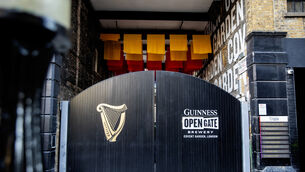Economic growth forecast by AIB chief
This year, growth of 4% is forecast, rising to 5% in GDP terms next year as the economy moves back to trend growth.
Measured in GNP, favoured by some economists, Mr Beggs says growth of 3.5% is on the cards this year, rising to 4.5% in 2005.
Key to the better figures is the return to sustainable growth in the US and the continuing positive outlook in Britain.
Economic growth will be broadly-based with domestic demand and net exports fuelling growth, he said.
Domestic spending is forecast to grow by between 3.5% and 4% in the two-year period, and exports are due to grow strongly by 6% and 7%, respectively over the two years. Overall unemployment may rise to 5% this year, up from the current 4.7% level.
It is clear the Exchequer is doing better than expected and the projected borrowing of €2.8b for the year may be €1bn less than forecast at Budget time.
Inflation will fall to 1.9% for this year, but it will go back up to 2.7% in 2005 and the economy continues to pick up. Core inflation will be steady at 2% over the two years with the move back to slightly higher rates, reflecting the growing economic buoyancy, he said.
The decrease in inflation to below 2% this year should keep wage demands low.
Mr Beggs said that a 4% rise in wages this year should be the upper limit.
Accepting such a deal, workers would enhance competitiveness, much of which has been lost in recent years, and secure their own future. Mr Beggs said the low interest rate/low inflation environment is likely to be sustained in the next two years.
European interest rates may fall from the current 2% before starting to rise next year.
In the US, interest rates probably will start to pick up and end the year 1% up on the current historic low base of 1%. By the end of 2005 they should be at 3.5% but still low by historic standards, said Mr Beggs.
In the currency markets, volatility is expected to decrease with the euro trading below e1.20 on average across 2005.
From an Irish perspective, the euro-sterling cross has been pretty stable throughout the slide of the dollar which has sustained the competitiveness of Irish goods in the British market place, he said. AIB Capital Markets managing director Colm Doherty said the forecasts as outlined suggest a "positive position for equity markets and a positive outlook for pension fund deficit," he said.
The more upbeat forecast suggested also a return to a much higher level of takeover and acquisitions in the years ahead, he said.
















